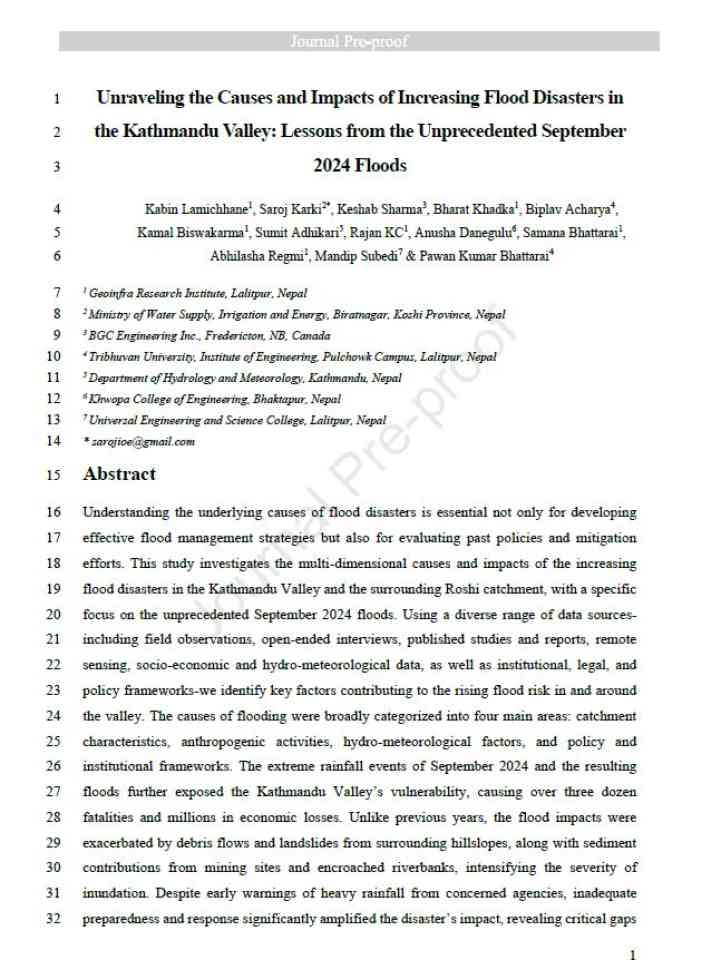Unraveling the causes and impacts of increasing flood disasters in the Kathmandu Valley: Lessons from the unprecedented September 2024 floods
This study investigates the multi-dimensional causes and impacts of the increasing flood disasters in the Kathmandu Valley and the surrounding Roshi catchment, with a specific focus on the unprecedented September 2024 floods. Understanding the underlying causes of flood disasters is essential not only for developing effective flood management strategies but also for evaluating past policies and mitigation efforts. Using a diverse range of data sources-including field observations, open-ended interviews, published studies and reports, remote sensing, socio-economic and hydro-meteorological data, as well as institutional, legal, and policy frameworks-we identify key factors contributing to the rising flood risk in and around the valley.
The causes of flooding were broadly categorised into four main areas: catchment characteristics, anthropogenic activities, hydro-meteorological factors, and policy and institutional frameworks. The extreme rainfall events of September 2024 and the resulting floods further exposed the Kathmandu Valley’s vulnerability, causing over three dozen fatalities and millions in economic losses. Unlike previous years, the flood impacts were exacerbated by debris flows and landslides from surrounding hillslopes, along with sediment contributions from mining sites and encroached riverbanks, intensifying the severity of inundation. Despite early warnings of heavy rainfall from concerned agencies, inadequate preparedness and response significantly amplified the disaster’s impact, revealing critical gaps in Nepal’s disaster management framework. Instead of a one-size-fits-all approach, effective flood management in the Kathmandu Valley requires a collaborative, multi-dimensional strategy tailored to its unique challenges. The September 2024 floods underscore the urgent need for systemic reforms in urban planning, policy reforms and enforcement, inter-agency collaboration, strengthened local government, and disaster risk management. This analysis provides critical insights for enhancing flood resilience and improving future flood risk management strategies in a holistic manner.
Explore further
